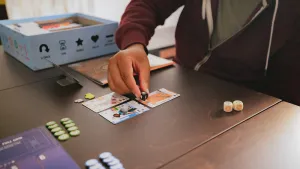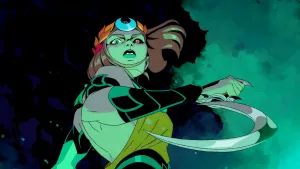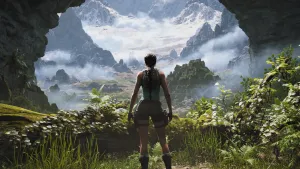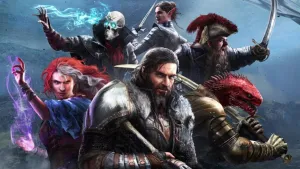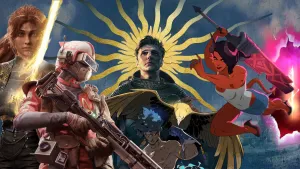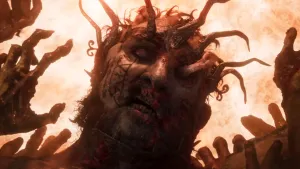An Interview With Warren Spector
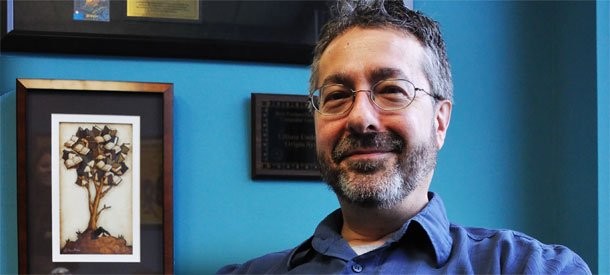
Upon our visit to Junction Point to learn about Epic Mickey, we had the opportunity to sit down for an extended conversation with Warren Spector. We tapped his expertise on Disney and Mickey Mouse, asked him all about his new game, found out what he thinks it will take to revitalize the character of Mickey Mouse, why he chose the Wii, and even what other Disney dream project he’d like to tackle. If you’ve been following our coverage of the game, you’ll recognize some of his words from other articles. To get the full scoop, read ahead for our complete interview.
GI: What do you think the significance of the Mickey Mouse character is in relation to film history and animation history?
Warren Spector: Mickey is critical to both animation history and film history. He was absolutely and demonstrably the most recognizable and popular film star in the world for about three or four years in the early ‘30s. He was huge at the box office. It’s not an overstatement to say that he gave hope to an entire generation of people living through the Depression. He was a little ray of sunshine. He seems kind of sweet and innocent, and his films don’t seem as anarchic and crazy and maybe relevant as today’s films do, but at the time it was exactly what the country needed, what the world needed. So he was there to provide it.
Just in terms of animation, he also represents a push for quality and for characterization and for story over gags – that was entirely new to cartoons. No one had ever really done that before. It’s actually not that completely accurate to say that he was the first sound cartoon character, but he’s the one that got in peoples’ heads first, and that means he’s the most important star of the talking pictures. You can argue that in 1928 when Steamboat Willie came out as the first sound synched cartoon that people were really aware of, Al Jolson was making the Singing Fool, which was a crummy old silent film style – and I mean, I love Al Jolson, and I love that movie, and there are probably five fans out there that are going to be offended now, but – he showed that sound film could be an art form in the same way that silent films were. Huge, hugely important.
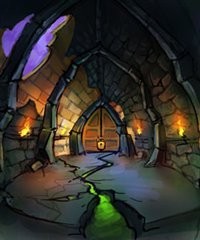 GI: What made those early Disney cartoons stand apart from the crowd? Animation was growing big at that point in general. What made Disney’s stuff work and take on that status that you’re talking about?
GI: What made those early Disney cartoons stand apart from the crowd? Animation was growing big at that point in general. What made Disney’s stuff work and take on that status that you’re talking about?
WS: The thing that I think set Disney apart more than anything else was his unwavering commitment to quality. He would not cheap out on anything. Animation at that point was this little backwater. No one cared about it. There were Felix the Cat cartoons, and some others. There were some cartoon characters who had some popularity back then, but they were really quickly thrown together, kind of haphazardly, slapdash things that nobody cared about. Disney really paid attention. He focused on quality.
He lost Oswald because he refused to compromise on budget. That was the fundamental issue. He wanted more money to make better cartoons, and his distributor wouldn’t give it to him. So they fired him, found somebody who would do it cheaper, and guess what? Nobody remembers Oswald after Disney stopped doing him. So unwavering commitment to quality, that’s number one.
Number two was he moved beyond just gag, gag, gag, which is what the earlier cartoon shorts were. It’s not that Disney skimped on the gags. I mean, he paid his animators by the gag. It’s not like he wasn’t thinking about that stuff, but he really brought a level of character and story to short cartoons that no one had ever seen.
GI: How do you see the character of Mickey Mouse having changed over the years? Were there particular eras that you identify in the character’s life?
WS: Yeah, there were definitely distinct periods in Mickey’s life. There’s a wonderful poster of all of the different major eras of Mickey. We’ve got it up on the wall, actually. I don’t know who owns the rights to that. It’s a great poster.
There’s that early phase where he was a rat. There’s just no two ways about it. He was a guy who smoked and drank and shot guns and skewered people with swords and threw Minnie Mouse out of a plane when she wouldn’t kiss him and abused farm animals. He was a badly behaved little guy. As he became more popular, I think Walt started saying, “Let’s make this guy more realistic. Oh, we don’t want to do things with this guy that the world isn’t going to like,” so they started taming him and taking different parts of his personality. I’m about to get really pretentious – he was like this fully individuated ego. Jung would have loved Mickey Mouse.
But at some point they fractured his personality. They took his mischievousness and his anger and need for revenge and gave it to Donald. At some point they took his naïve simplicity and gave it to Goofy. They took his loyalty and infinite affection and gave it to Pluto, of all things. They took his character and just shattered it, and all of a sudden he’s kind of a straight man for the gang. So there’s that middle period where they kind of lost some of what made him special. He stopped being Douglas Fairbanks the adventurer or even Charlie Chaplin the humor guy, and they turned him into just the straight guy.
GI: When was this period? When do you see this change first happening?
WS: I think you start to see it by the early ‘30s. By 1932, that was well under way. He was created in 1928, and he had a three or four year run of being this amazing character that I think even if kids watched that cartoon, if they could stand to watch something in black-and-white, I think they’d really get a kick out of it and be amazed at how badly behaved Mickey was.
But by the early ‘30s, though he was no less popular – I mean, he was absolutely beloved in ’32, ’33; that was his peak right there – but by that point he had kind of become the straight man. And then toward the end of the ‘30s, it looks to me from the outside that they were trying to bring back some of the adventurous spirit that he had. By the ‘40s, they were doing things like Brave Little Tailor and that kind of stuff. They tried to get it back, but they just couldn’t take any risks with the guy. He was so successful and so popular that taking any risks with him risked the entire future of the company. Who’d be crazy enough to do that? Wait, other than me. No one’s nutty enough to do that.
By the ‘40s, he was already kind of on the wane. If you look at it, Donald Duck was way more successful by the ‘40s. There were lots more Donald cartoons. By the ‘40s, Mickey was appearing as a secondary character in Pluto cartoons for the most part. Goofy and Donald were doing their solo thing. I think in 1952 they did “The Simple Life.” That was Mickey’s last cartoon for about 35 years. It was kind of over. He was an icon on a watch, on a t-shirt.
There have been attempts to bring him back. “Run-Away Brain” in 1995 – I loved that cartoon. I don’t understand why people at Disney don’t like it. I think it’s brilliant. It’s a fantastic cartoon. But other than that, there’s “The Three Musketeers.” I dunno. “The Christmas Carol.” Eh. They didn’t know what to do with him anymore. He’s kind of been laying fallow, which is a great opportunity for us.
GI: Is there something in particular that you see Mickey needing to do to speak to a modern audience? What does Mickey bring to the table for somebody in 2009 or 2010?
WS: The irony is I think the best way to rejuvenate or revitalize the character, whether in a game or in a movie or anywhere else, is to return him to his roots. Not the ‘50s suburban uncle, not the ‘40s trying to make him a little more adventurous, not the ‘30s leader of the gang, but go back to those late ‘20s, early ‘30s cartoons where he was mischievous. Mischievous is the nice way to put it. He was a badly behaved mouse. He was a troublemaker. He was always doing bad stuff.
And honestly? I think kids grow up too fast now. They’re not going to settle for naïve, low-key humor – they’re not going to go for that. They want something more energetic, they want to act out. And Mickey used to be a character who they could sort of say, “He’s acting out for me,” and I think he could do that again. I also think the pace of old movies – the average shot length in classic Hollywood was about 30 seconds, and now it’s about six. So I think you need to pick up the pace; people need a faster pace. Unless you’re Pixar – Pixar gets away with it, it’s amazing; they can do this slow, languorous stuff and people love it. But if you’re trying to appeal to the kids who should love Mickey and the young adults who are out there watching MTV, I think you’ve got to pick up the pace. So get back to the roots, pick up the pace, be badly behaved; I think that’s what it’s going to take.
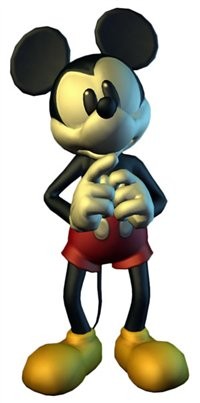 GI: Let me switch gears from the history of Mickey to the project itself; how did the game get started?
GI: Let me switch gears from the history of Mickey to the project itself; how did the game get started?
WS: It’s an amazing story how this happened. I left Ion Storm in 2004, and I had a Non-Compete so I had to sort of not work for awhile, and I put together all these plans, and I had a couple of game proposals that I was shopping around. And I’m almost ashamed to say, I have an agent – Seamus Blackley at CAA [Creative Artists Agency] is my agent – and he was taking me around to all these publishers and we were pitching projects, and he said, “You should talk to Disney.” And I said, “Disney’s not going to be interested in the stuff I’m pitching.” And he said, “No, no, no, you should talk to them; they’re changing.” And so we went to Disney and sure enough, I’m out there pitching an epic fantasy roleplaying game – a game that’s sort of Deus Ex like, but with a more militaristic spin, and really dark and really, really edgy and stuff – and of course they weren’t interested, you know? But I see all these guys – all the Disney execs are sitting around the table, and they’ve got their Blackberrys out and they’re checking their mail and stuff. And so I thought, “Oh, I’ve lost them. I’m going to kill Seamus when I get out of here, because I told him this was going to happen.”
And it turns out that what was going on – it wasn’t that – I mean they weren’t interested in the projects I was doing, but they were actually texting each other to see if they should ask me about this other thing they wanted done. And they asked if I would be interested in doing a licensed project. And I said, “Yeah, I’ve been wanting to do one.” I gave the design keynote at GDC in 2003 or 2004, about licenses and sequels, and how you can do creative stuff in that context. And so I was like, “Yeah! Give me Uncle Scrooge! Give me Duck Tales! Come on!” And I had a proposal that I wasn’t pitching that day, but I wanted to do a Night Stalker game, a monster of the week – what if monsters really existed in the world. And they weren’t interested in that, but they said, “What do you think about Mickey Mouse? Would you be interested in doing a Mickey Mouse game?” And I said, “No!” Because I don’t do games for kids and – it was really funny, I said – this is a quote – “You’ve done an incredibly good job of making Mickey lame and irrelevant to anybody over the age of eight over the last thirty years. I don’t do games for kids.” And they said, “No, no, no!” It was really magical, they said, “We want someone to reinvigorate this character, reinvent this character.” And I’m sitting there going, “Ooh! Disney fan, loves Mickey Mouse, reinvent character. Ooh – make character relevant to a 21st century audience. Ooh, that could be impossible.” And I mean literally, I said, “You know, this is probably impossible, we’re probably going fail. I’m in.”
And so at that point they called in Luigi Priore, who was running the think tank at Disney, which I guess a bunch of interns would come in and work up concepts and everything. And he gave me a pitch on a Mickey project that they had been working on, and I sat there and I watched this Powerpoint presentation that he did – and it’s like, “Holy cow, that is the heart of an amazing game.”
GI: So they were pitching it as a game at the time? Or just a more general –
WS: No, they had a game pitch. And that almost never works; coming up with a game idea at a publisher and then just finding a developer to do it – I don’t think that works particularly well – I don’t think it works well often, let’s put it that way. But they just happened to find – I feel like I’m talking about myself in the third person – but they happened to find the one guy who’s fanatical about this stuff, and there was the heart of this great idea. I mean there was Oswald in that pitch, and I think the Phantom Blot was in that pitch – we have changed everything, And they were saying, “Now you don’t have to do this, you can do whatever you want with this character, you can do whatever you want with this game!” And I said, “Why would I – I’m going to use that as my starting point. I’d be crazy – it’s a terrific idea, let’s go!”
And that’s kind of how it started. I came back here and said, “Guys, we now have two projects we’re working on” – there was another one that I can’t talk about unfortunately; we were working with another entity let’s just say, on some stuff; we did some concept development for someone else. And while the bulk of the team was doing that, I got together with a writer/designer friend of mine and a programmer, both of whom are still here, and we spent three or four months working up a proposal, and brought it back to Disney, and they loved it. And there’s a lot more history in there which we can talk about if you’re interested, but the rest is history.
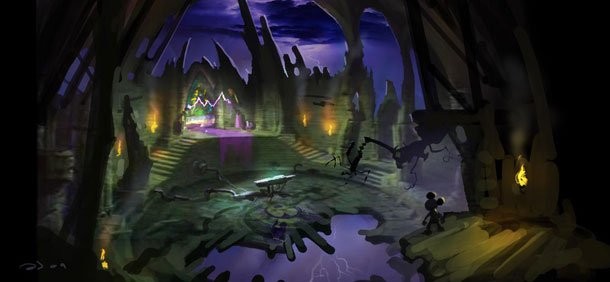
GI: At some point the ties with Disney were formalized. Did that happen early on?
WS: Here’s the story; we spent probably four or five months developing the idea, and I presented it, and everybody seemed to love it. And then it was like, OK – I was invested, I had to do this game, I mean I had to do the game. And they said, “OK, the way you get to do the game is if we acquire your studio.” And I was already working on other stuff – I had a bunch of really cool stuff that someday I’ll be able to tell you about – and I was sitting there going, “Well, I don’t want to sell the studio [laughing].” I like being independent – I left Ion Storm and Eidos so I could make my own mistakes, right? But we did some negotiating, and we couldn’t reach an agreement. So at the end of the day they put an offer on the table to acquire the studio and I said no.
So we parted ways for a year, year and a half – I don’t know. And then the guy who was running development at Disney Interactive came to me after this year, year and a half – and I assumed it was dead and I was never going to get to do it. He called me up and said, “Can we talk?” And I said, “No, I’ve got another deal, I’m working on other stuff.”And he said, “Let me fly down tomorrow, and we’ll talk.” And he flew down here the next day, and to make a long story short, it was still I become a part of Disney; that’s the only way I get to make the game, they weren’t going to let me do it as an independent. But this time we reached an agreement – and I always wanted to work for Disney anyway; when I graduated from college, I got Disney stock; that was my present. And I wanted to be an Imagineer. So this was – at the end of the day I just said, “Well, I can always do another startup if this doesn’t work out; I want to make this game so bad I can taste it, so let’s do it.” So there it is. Oh, the timing on that was in early 2007, February 2007, and I think it was June at E3, we signed – they set up a press conference to announce this, and I had not signed the acquisition papers, or my personal services agreement… And so – you were there…
PR: Yeah, I’m just – the high level of it is that the deal got signed like, right at the start of the press conference.
WS: I mean literally I was standing outside on the steps with with a pen and a contract, and I had my phone to my ear and I was talking to my lawyer with one hand, and I was talking to my agent with the other hand, and it’s like there are 300 journalists in there, or 50 journalists, I don’t know –
PR: Oh no, the room was packed…
WS: The room was packed – there was a little video that was going to play; I finally said, “OK, I’m trusting you guys.”
It was a crazy day. And the thing was – like I said, it was announced – I was working with John Woo on a modern day ninja game; we had a movie deal and a game deal, and these characters that I had created with him, and this world that I created, I was walking away from it – honestly, I was crying, I mean I – these characters I created, someone else is going to get to mess with them now. And it was very hard to walk away from that, but – it’s Mickey… How many times in your life are you going to get the chance to play with an icon? It just doesn’t happen. It doesn’t happen.
GI: I think a lot of people are familiar with the work you’ve done on your previous games, and as you’ve mentioned before there’s certain ideas that kind of unite some of those games, and certain themes that run through, and certain design values that have shown up in a number of games that you’ve worked on. Do you see any particular design values or game play values from your other games that have made their way into Epic Mickey?
WS: Oh yeah. It’s funny, one of the things I was really worried about when I agreed to do this game, was how am I going to recruit – because my assumption was that people would want to come here because they played Ultima games and they loved the Avatar and Britannia and stuff – and I worked with Richard Garriott on a bunch of those, and did a bunch of Ultima games on my own – and so that’s part of what people think of. And you know, Deus Ex: guy with a trench coat, two guns, sunglasses at night, sort of real world stuff – anyway to make a long story short, I worried about recruiting, but I finally just realized that the context, the fiction, is really secondary. I love telling stories, but what’s really more important to me is collaborating with players and the telling of those stories. And all of the core game play values, the things that I think make games important, and make games different – they can be expressed in any fictional context; they can be expressed in the context of a funny game or a sad game, or a scary one. Or a realistic science fiction game, or a hardcore fantasy game, or a cartoon game; those values of creating problems that players can solve however they want, showing them the consequences of the choices they make – that’s not fiction based, that’s game based. So all of it, everything I think is important is going to be expressed in this game – or else… I don’t know if the “or else” is addressed at me or Disney or the team, but it’s all *** well going to be there. I have no interest in making games that don’t do that. None.
GI: So the idea of choice is really central to any game that you’d work on?
WS: Yeah.
GI: Let’s get down to the nitty-gritty of game play. What do you see as the central game play mechanic of the game?
WS: The central game play mechanic of Disney Epic Mickey is paint and thinner. It’s basically drawing and erasing; it’s making the world whole, or making it go away. And that’s part of a – over the last five or ten years I’ve been feeling really constrained by the fact that game designers – we build sets. We build things where if you scratch an inch below the surface, there’s nothing there; if you peek behind the walls you see that they’re flats held up with 2x4s. I came into this business, I started out – we create worlds in our heads, right? When we play tabletop roleplaying games, that’s what they’re all about; it’s visualizing and making this world real in your imagination. And one of the things that really attracted me to Origin and Richard Garriott, was we create worlds. That was Origin’s motto, and I mean I get chills just thinking about it now – I believe that stuff; we create worlds. And I look around and there aren’t enough people creating worlds anymore. And so I wanted to create – of all the games I was pitching since I left Ion Storm, were about creating a world that was more than a movie set, where you could scratch beneath the surface and there was more going on there. And so this whole paint and thinner mechanic really plays into that because you can dynamically change the world to suit your needs. So dynamically changing the environment to solve problems is kind of what it’s about.
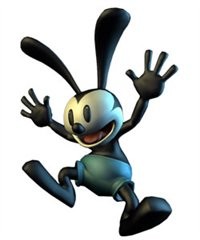 GI: What’s the setting for the game?
GI: What’s the setting for the game?
WS: The Mickey game is set in the world called the Wasteland, which is a land of forgotten and rejected Disney creativity. The backstory fiction is Walt Disney couldn’t throw anything away – the archives are evidence of that – and if he couldn’t throw like a piece of paper away, how could he bear for the fruits of his imagination and his animators’ imaginations, and the Imagineers’ imaginations – how could he bear to see that just lost forever? So the power of that idea, “I must never lose these characters or these rides, or anything,” led to the creation of this alternate universe, which is this limbo world where forgotten and rejected characters, theme park rides, scenes from movies that never got made – scenes that didn’t fit into movies that did get made – background paintings, character costumes from the park that got moth-eaten – designs for garbage cans for crying out loud, you know? All of that stuff – where does it go when the world rejects it or when its time has passed? It goes to the Wasteland. And when the world is ready to re-embrace those things – when the world is ready for the flying saucers ride at Disneyland, gosh darn it, it’s coming out of the Wasteland and it will be there. And when the world is ready for Oswald? He comes out, like he is now. And when the world is ready for a reinvigorated Mickey Mouse? What better way than to have him come back out of the Wasteland? So that’s kind of the setting.
GI: Certainly there are a lot of things about that world that set it apart from what we’re used to seeing from Mickey Mouse cartoons – do you have a general way of describing the tone of the world and the characters we see there?
WS: It’s dark and twisted, that’s kind of what it’s about. I want people to have – as they play the game and they look at things, and they move through spaces and they listen to the soundtrack – I want them to have this feeling of recognition and familiarity, and then I want to yank the rug out from under them. I want them to feel like, “You know, I’ve been here before but – no, I really haven’t. I’ve heard that song... no, that’s different.” So there’s that moment of recognition, and then there’s the shock that something’s different. That’s kind of what I’m hoping for.
On top of that, I really want to scare kids. I’m gonna keep saying that until I’m blue in the face. It’s going to be a funny game. Honestly, I bet a lot of fans are really gonna be upset with me about this, but I really want to do something lighter. I don’t want to do dark and heavy. I want people to smile when they’re playing, not get all scrunched up with adrenaline. I want people to smile when they’re playing a damned game for a change. This seems like a perfect opportunity to do that, but thrown in there every once in a while, there’s going to be an “Oh my god!” scare. That’s what I’m shooting for. We’ll see if I succeed. That’s a tough thing – funny and then scary. But we know Disney can do it, so we’ll see if we can do it in a game.
GI: Why the Wii?
WS: Well, think about it. Would you really want to tackle convincing Halo or Grand Theft Auto players that they want to be Mickey Mouse? Would you really want to do that? In terms of finding a congenial audience, let’s go for a platform that’s known for Mario and Link and now Sonic. Come on. Honestly, with the unit sales on the hardware, it was kind of a lucky happenstance. We made the call to go to the Wii long before it was clear that the Wii was going to be, at least for now, the best-selling platform.
It was about going where the audience is and going somewhere where they’re going to accept a visual style that is more cartoony than people are used to seeing and where we don’t feel obliged to throw in every shader on the planet. “Look at the normal maps and shaders.” We don’t have to do that kind of stuff. It’s the right platform for this project, for sure.
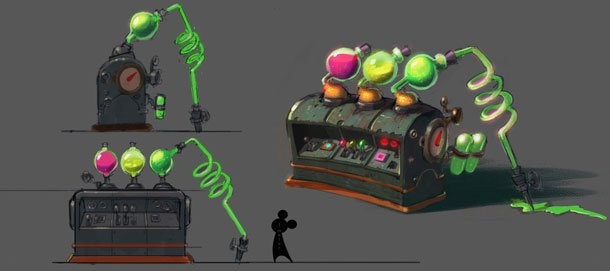
GI: We talked about that primary gameplay mechanic of the paint and the thinner, but you’ve also said that it’s important to you that there’s more than just that central mechanic. What are the other things that crystallize the gameplay and make it fun?
WS: I really think every game needs a couple mechanics. I used to throw the kitchen sink in. Everyone here calls me the kitchen sink designer. It’s kind of embarrassing. I think in addition to the core you need – if you just keep doing the same things over and over, no matter how dynamic or interactive you make your world, eventually it’s going to get kind of old. You need some modifiers. You need your +5 sword.
So we’ve created this secondary system, this sketch system where you can create objects from blueprints. They modify NPC behavior. They modify the simulation. They modify things as opposed to create and destroy or draw and erase as very binary, very black and white. These offer a different kind of interaction with the world and the environment and the characters. I think the combination of those things is going to result in unexpected events.
That’s another core value. I really believe in the value of emergent situations, things that are not planned. When you get simple systems that interact with a simulation that is just deep enough to support unexpected behaviors, when you start getting things happening that the developers didn’t know could happen, that’s when you start to win. That’s the big win, because then players discover solutions to problems that we didn’t even know existed.
It happened all of the time in Deus Ex, it happened in System Shock, it happened in the Ultima games. I saw it happen in Ultima VI by accident, where we had simulated something just deeply enough that something that was not planned happened and worked in the solution of the problem. As soon as I saw that accident, I said I’m doing that on purpose next time. Here we are 20 years later, and I’m doing it on purpose every chance I get. These sketches offer us some real emergent situations when you use those in combination with your core abilities.
GI: For readers who don’t know, who is Oswald?
WS: Oswald the Lucky Rabbit was Walt Disney’s first big cartoon star. He’d done a series of cartoons before that, which were kind of live action hybrid cartoons. Oswald was his first attempt – he and his partner Ub Iwerks, who gets too little credit. Iwerks was the killer animator of the 1920s. Oh my god, he was amazing. Anyway, they created this rabbit character in 1926 or ’27. You probably want to fact check that. For about 18 months, Oswald was one of the most successful cartoon characters on the planet if not the most successful cartoon character.
The cartoons were distributed through Universal. There were some middlemen involved. The contract came up for renewal for more Oswald cartoons, and Walt wanted more money to do these. They wouldn’t give it to him, and they said, “Look at your contract. We own the character. You’re fired. Oh, by the way, we’ve hired your entire animation team away from you without you knowing about it.” Except for Ub, he still worked for Disney. Ub and Walt created Mickey as a result of losing Oswald.
But in that 18 months, they made 26 Oswald cartoons, 13 of which still exist. Disney re-released them in a little DVD set, and you’ve got to watch them. They’re amazing cartoons. In a lot of ways, because they’re the peak of the silent cartoon era as opposed to the beginning of the sound cartoon era, they’re actually better than the early Mickeys. They’re really funny, they’re really anarchic. Oswald was this crazy, randy rabbit who fell in love with a different rabbit or cat – which was really weird – in every cartoon. He could split his body parts into pieces. He could throw his head around like a bowling ball. He could use his ears like oars or bats. Cannonballs would come to life. Crazy stuff, really over the top and laugh-out-loud funny, even today. Just go back and watch those cartoons, and you’ll see why he was so successful. It’s an amazing character.
GI: And who is he in the game? Is he that same character? Has he changed over the years?
WS: Oh, Oswald is very changed. In our world, when the game begins, Oswald is the no-longer-lucky rabbit. He’s been living in a world of pain for many years, resenting Mickey for stealing the life that should have been his, wanting to be loved by Walt even though he doesn’t really know who Walt Disney is. He wants to be loved by Walt, his dad. He’s resentful and bitter and hides out in a place we’re not going to talk about.
Mickey has to get him to re-engage, has to get him to stop hating Mickey Mouse and get him to re-engage with the world, so together they can solve the world’s problems. That’s most of what the game is about: getting Oswald back on your side so he can help you out, rebuilding that family.
GI: Who or what is the Phantom Blot?
WS: The Phantom Blot was created by Floyd Gottfredson who is probably the second greatest comic book writer and artist of all time after the sainted Carl Barks who did all those Uncle Scrooge stories that I love so much. In 1939 or ’40, Gottfredson created the Phantom Blot as a villain to face off against Mickey in a comic book. You know, I love Floyd Gottfredson, I really do, but wow, the Phantom Blot is a lame villain. He’s a guy in a black sheet who robs cameras. He steals peoples’ cameras. Mickey the detective has to solve the problem. He’s appeared over and over again.
It’s kind of weird that we’re considering him a forgotten character, because he actually still shows up in comic books and he’s appeared in two TV episodes. But I thought we’ve got to take this thing as a tribute to Floyd Gottfredson, we’ve got to turn this guy into something big and scary and worthy of Mickey. We’ve re-envisioned him pretty dramatically as a creature of paint and thinner and corruption. That’s the way I describe him to the team. He’s an interesting character. He’ll be troubling Mickey for a while, I suspect.
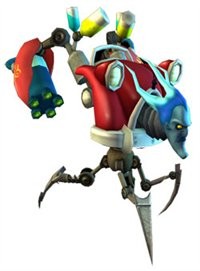 GI: What do you consider will make the game a success? What for you would make it a success?
GI: What do you consider will make the game a success? What for you would make it a success?
WS: The number one thing I want to see happening, I want to go on the forums and have some gamer – this is probably not Disney’s goal for the game, this is my goal for the game – I want to go on the forums on the Game Informer website, and I want to hear somebody say, “Mickey Mouse is lame! You’re playing a mouse, you moron!” and just have everyone in the world jump on him. “No, Mickey Mouse is cool! What are you talking about?! Play the game! Shut up!” I want to see people going out there and saying, “I want to be Mickey Mouse,” not just wearing a Mickey Mouse watch or t-shirt. I want people saying, “I want to be Mickey Mouse.”
I want to go to Disneyland or Disneyworld and see the Wasteland ride. That’s another little mark I’ve got to check off on my resume. I’ve got to create a theme park ride. I’ve got to do that. I really want there to be a theme park ride. I want to be in a park.
And I want to make a movie. As much as I love telling stories with players, there is so much to this story that is going to be frankly very hard to express in an interactive context. There is a feature-length film to be made out of this that would rock peoples’ worlds. I want to see that movie get made too. I need to make a movie. That’s the other thing on my resume that I haven’t checked off. Those two things, and then I’ll be good to go. I’ve played music in front of paying people, I’ve written a novel, I’ve made 19 games, this will be my 20th. I work for Disney. I’ve got to produce a movie, and I’ve got to design a theme park ride.
Also, I want to do a Duck Tales game. Convince the world that a Duck Tales game needs to be made. I can’t convince anybody at Disney to let me do a Duck Tales game. How can that be?
GI: Everybody I know, when you ask about the cartoons that they are fond of from childhood, there’s that varying list of all the action ones, the G.I. Joes and the Transformers and the Thundercats and all that stuff, but everybody loves Duck Tales.
WS: Carl Barks really is the greatest American comic book writer and artist ever. Some people would say Will Eisner. There’s competition. But Carl Barks is the best, and he wrote and drew the stories that inspired half of those Duck Tales episodes, and they are watered down. You would not believe the beauty and the power of those stories. They’re not for kids. They’re really very adult or certainly appealing to the broadest possible audience, which is kind of where I want to be now. I don’t want to make games for kids, I don’t want to make games for gamers, I want to make games for everybody. I think if someone did Carl Barks or Duck Tales right, it would be awesome. Donald Duck and Uncle Scrooge were Indiana Jones 50 years before Indy was a glimmer in Spielberg’s eyes. It’s just amazing, and they’re doing nothing with him right now.
GI: You can make that happen.
WS: Yeah, we’ll see. That’s a big organization to buck.
GI: But once you do Mickey, it all opens up, doesn’t it?
WS: We’ll see. I hope you’re right.

Get the Game Informer Print Edition!
Explore your favorite games in premium print format, delivered to your door.
- 10 issues per year
- Only $4.80 per issue
- Full digital magazine archive access
- Since 1991


